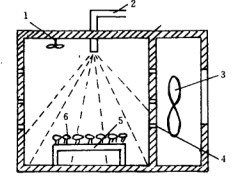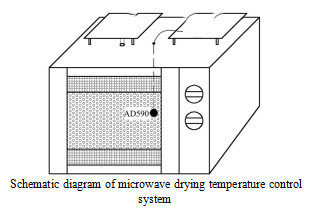Study on microwave drying kinetics model of spring bamboo shoots
ABSTRACT: The variation of water loss rate and color of spring bamboo shoots (5mm thickness, 200g) during drying was studied under different microwave power. The water loss rate increases with the increase of microwave power, and the water ratio change model is established by using Page equation with better fitting property.

The color change parameters are expressed in terms of brightness L, red degree a and yellow B. The value of red a and yellow B increased while the brightness L decreased, and the overall color of bamboo shoots deepened after microwave drying equipment. Variations in color parameters are modeled by zero-order and first-order reaction models in food. Changes in L and B are suitable for first-order reaction models, and changes in a are suitable for zero-order reaction models.
Key words: microwave drying of spring bamboo shoots; water loss rate; color; model
Preface
A dynamic model of water loss and color change is studied and established in order to provide the corresponding criteria for the processing and storage of agricultural products and to facilitate the realization of automation. Such studies are being carried out both at home and abroad. In order to apply microwave as a way of supplying heat energy to the drying process of spring bamboo shoots, this experiment mainly studied the changing rule and better technology of microwave blanching and color protection and microwave drying.
1 materials and methods
1.1 materials and equipment
Spring bamboo shoots, purchased in Hangzhou Agricultural Market, with initial dry base moisture content of 99.5%; phosphate buffer (pH 6.86), catechol, citric acid, calcium chloride (all above are analytical pure); WB-750 microwave oven (working frequency 2460 MHz), with 10 microwave output power (75-750W); JA5003 electronic balance (Shanghai Tianping Instrument Factory), and so on. SC- 1 intelligent color difference meter (Wenzhou Instrument Co., Ltd.), stainless steel slicing knife.
1.2 sample handling
_The shoot tip and old shoot head were removed by slicing. Each shoot body was first cut into 30 mm x 25 mm cross section, and then longitudinally cut into 3.5 mm or so shoots. Take each 200g.
2. Drying the bamboo shoots to protect the color and rinse and drain the surface moisture. It is evenly spread in the microwave drying oven with a loading capacity of 1.71 kg/m (200 g for one drying), and dried with 150W, 225W and 300W power respectively. During drying, weigh and measure the color quickly and safely until the safe dry base content (about 13%) is reached. The color parameters were measured with reference to the color measured after drying.
1.3 indicators and determination methods
Dry-base moisture content in each period: Stop the machine regularly during the drying process, weigh quickly, and calculate the dry-base moisture content.
Water loss rate: the ratio of the difference between adjacent two times weighing (g) and time interval (min).
Color parameters: uniform color space parameter brightness L and chroma A and B. L varies from 0 to 100, 0 is black, 100 is white, A is red between red and green, 100 is red, and - 80 is green, B is yellow between blue and yellow, 100 is yellow and - 80 is blue.
Color parameter measurement: SC-1 intelligent color difference meter is used. The diameter of measuring mouth is 20 mm. The ceramics standard plate is calibrated by X=70.2, Y=74.2 and Z=80.0. In each test number, 4 representative bamboo shoots were selected with a size of 30 * 25 * 3.5 (mm). Dial the disc to the 8 reading, and measure 2 times for each piece of bamboo shoots, and automatically calculate the mean value of the color parameters. The drying results were compared with the sample parameters as a test index for drying color change.
Data processing and analysis software: data processing is done with origin 6, and SAS is used for regression analysis.
conclusion
The Page equation is used to simulate the different drying power loss models, and the equation is significant 0.0001. The brightness decreases with the increase of drying time. The red degree and yellow degree deepened with the increase of drying time, indicating that the color of bamboo shoots was deepened. The change of color parameter brightness L and yellowness B is suitable to be expressed by first-order reaction model, while the change of redness A is more suitable to be expressed by zero-order reaction model.